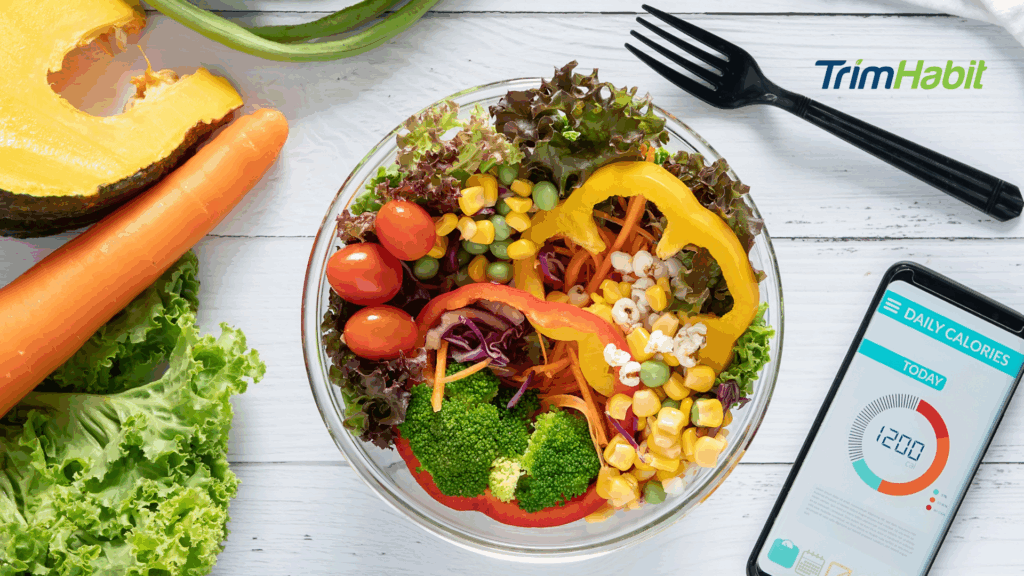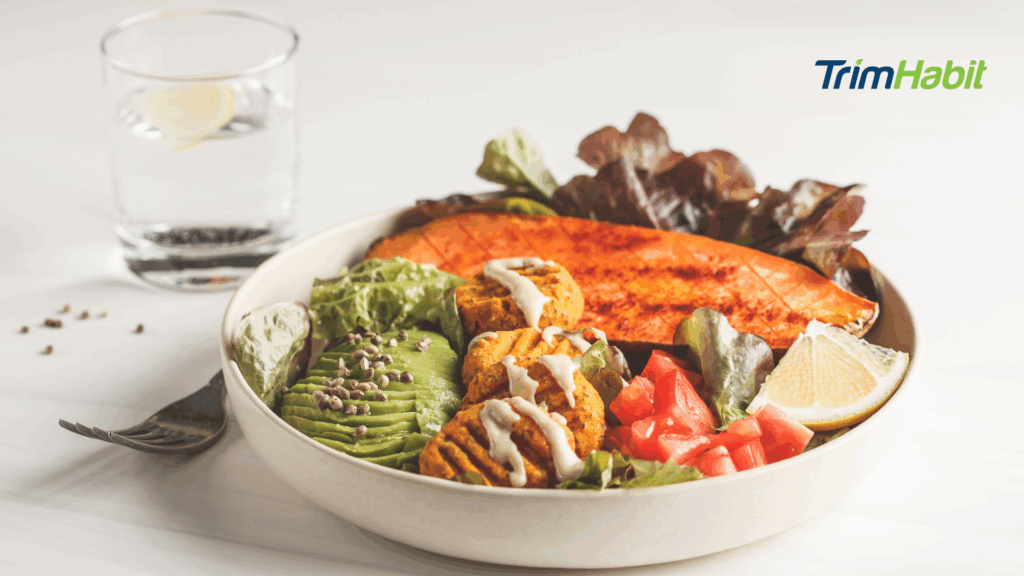Vegetables are commonly recommended for health and weight management but a less-explored consideration is their impact on inflammation. Weight loss and inflammation are interconnected in several ways, and recognizing their relationship is crucial for maintaining overall health.
Let’s uncover the best low inflammation vegetables for weight loss, delving into the significance of inflammation and discovering the benefits of incorporating anti-inflammatory foods into your diet.
What Is Inflammation?
When your body identifies something foreign, like an invading microbe, plant pollen, or chemical, your immune system is activated, leading to a process known as inflammation. Intermittent episodes of inflammation, specifically targeting genuine threats, play a crucial role in preserving your health.
In the context of bodily functions, inflammation is not inherently negative. When the body experiences injury or illness, the lymphatic (immune) system becomes activated, mobilizing the immune system’s white blood cells to the affected area through heightened blood flow1.
This increased focus on the area may result in observable signs such as swelling, redness, warmth, and sensations of pain or discomfort. You may have witnessed this inflammatory reaction when a cut or scrape exhibits warmth and swelling around the wound due to the influx of additional blood.
Nevertheless, there are instances when inflammation2 lingers consistently, persisting day after day, even in the absence of a foreign invader threat. It is during these times that inflammation can turn into a detriment. Chronic inflammation3 has been associated with numerous prevalent diseases, including cancer, blood pressure, heart disease, diabetes, arthritis, depression, and Alzheimer’s.
In a well-functioning and healthy body, inflammation is a natural and beneficial response that aids in the healing process4.
What Is An Anti-Inflammatory Diet?
Following an anti-inflammatory diet involves increasing the intake of naturally anti-inflammatory foods while steering clear of those that induce inflammation. For individuals dealing with conditions marked by chronic inflammation, adhering to such a diet may provide relief from associated symptoms. However, while generally regarded as safe, it is advisable to collaborate with your doctor to determine the most suitable approach for your specific needs.
What Does An Anti-Inflammatory Diet Do?
Standard American diets (commonly known as SAD) are not typically celebrated for their nutritional excellence. However, when the discussion shifts to inflammation, it becomes imperative to reconsider your conventional dietary habits, according to a report from the National Institute of Allergies and Infectious Diseases5:
While the contemporary diet prevalent today may offer protection against deficiencies in micro- and macronutrients, the surplus of calories and macronutrients in most diets may contribute to heightened inflammation, compromised infection control, elevated cancer rates, and an increased susceptibility to allergic and auto-inflammatory diseases.
To transition toward an anti-inflammatory diet and incorporate anti-inflammatory foods, it is essential to distance oneself from the general overly processed and imbalanced diets of the West6. Instead, embracing the dietary patterns of the Mediterranean, characterized by abundant fresh fruits and vegetables, minimal red meat, an absence of chemicals or meat additives, and an abundance of omega-3-rich foods, becomes a primary step.
Best Low Inflammation Vegetables For Weight Loss
When it comes to incorporating low-inflammation vegetables for weight loss, several options stand out:
1. Leafy Greens: Leafy greens exhibit varying degrees of anti-inflammatory properties, potentially attributable to distinctions in the composition and concentration of bioactive compounds7. Leafy greens contribute to weight loss due to their low calorie and high nutrient content.
2. Cruciferous Vegetables: Broccoli, Brussels sprouts, cauliflower, and cabbage are rich in anti-inflammatory compounds8 and offer fiber that aids in digestion and satiety.
3. Bell Peppers: These colorful veggies, particularly red bell peppers, are a source of antioxidants9 and vitamin C. They’re low in calories and can be a flavorful addition to salads or stir-fries.
4. Onions: Onions contain quercetin, an antioxidant with anti-inflammatory properties10. They add flavor to meals without adding many calories.
5. Garlic: Known for its health benefits, garlic contains compounds that may help reduce inflammation. It adds depth to dishes while offering potential anti-inflammatory effects11.
6. Celery: With high water content and low-calorie content, celery is a hydrating and crunchy option that’s often incorporated into weight loss diets and has anti-inflammatory properties12.
Including these vegetables with low inflammatory potential in your dietary choices can aid in weight loss and promote overall health. Their richness in nutrients and anti-inflammatory properties makes them valuable additions to support your well-being.
Inflammatory Vegetables To Avoid
Predictably, the foods discouraged in an anti-inflammatory diet align with those generally deemed detrimental to your well-being. These unhealthy food choices are also implicated in weight gain, which constitutes a standalone risk factor for inflammation.
While vegetables are generally considered healthy, certain components or ingredients in these foods may exert independent effects on inflammation beyond the impact of simply consuming excess calories. It’s important to note that reactions can vary, and what triggers inflammation for one person might not affect another.
Here are some vegetables that individuals seeking to reduce inflammation might consider limiting or avoiding:
- Corn: Corn is a starchy vegetable that may cause inflammation, especially when consumed in refined forms like corn syrup. It has a high glycemic index, which can influence blood sugar levels.
- White Potatoes: While sweet potatoes are often praised for their nutritional benefits, white potatoes may have a higher glycemic index and could impact blood sugar levels, potentially contributing to inflammation.
- Vegetable Oils: While not a vegetable per se, vegetable oils like soybean oil, corn oil, and sunflower oil are often derived from vegetables. These oils are high in omega-6 fatty acids, and an imbalance between omega-3 and omega-6 fatty acids may contribute to inflammation.
- Processed Vegetable Products: Vegetables in processed forms, such as fried items or those with added sugars and unhealthy fats, can contribute to inflammation. Examples include vegetable chips and certain frozen vegetable products with added preservatives.
- Conventional Produce with Pesticide Residue: Some conventionally grown vegetables may contain pesticide residues, which, in some cases, could contribute to inflammation. Choosing organic options may reduce exposure to pesticides.
It’s crucial to understand your body’s response to different foods and consult with a healthcare professional or registered dietitian, especially if you suspect food sensitivities or inflammation-related issues. A personalized approach to nutrition is key, and what works for one person may not be suitable for another. Additionally, incorporating a variety of vegetables and maintaining a well-balanced and healthy diet is essential for overall health.
Conclusion
To fight inflammation, strive for a well-rounded and healthy diet. If you seek a dietary approach aligned with anti-inflammatory principles, contemplate adopting the Mediterranean diet which can significantly decrease inflammatory markers. This eating pattern emphasizes the consumption of fruits, vegetables, nuts, whole grains, fish, and healthy oils such as olive oil.
Beyond mitigating inflammation, embracing a diet that is more wholesome and less processed can yield discernible impacts on both your physical and emotional well-being. Such a nutritious diet proves advantageous not only in reducing the likelihood of chronic diseases but also in enhancing mood and overall quality of life.









